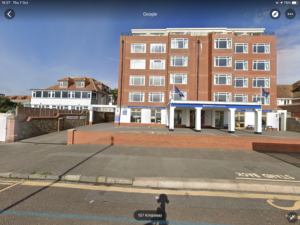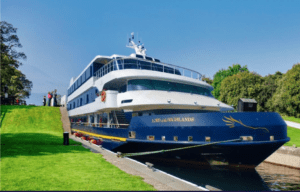Generations of families worked down the pit and the region’s prosperity was based on coal. Many of the villages and towns in the North East began as pit villages, with rows of terraces houses being built to house the mine workers and their families. Many of the houses were tied and provided by the colliery owners. The communities were close knit with neighbours helping each other out.
A typical pit village has been built by the site of the colliery.
Methodism was very strong in the North East and many mining families were Methodists. Life revolved around the Chapel and attendance at Sunday services was compulsory. The Chapel was very much the focal point of the community and hosted a number of social as well as religious activities. Thrift, independence, hard work and self improvement were encouraged.
The chapel dates from 1850 and was originally built in Beamish village, not far from the museum.
The inside is very plain with whitewashed walls and a small central pulpit. The chapel has a replica of a double lensed acetylene powered lantern which was used for magic lantern shows.
Every village had a school and education was compulsory until the age of twelve. Attendance in rural areas dropped during haymaking or harvest. Girls would often stay at home on Mondays to help with the washing. This building came from East Stanley and dates from 1892 and would have held about 150 pupils.
Each was built on a similar plan with a small playground and separate entrances for boys and girls at either end of the building and separate cloakrooms.
There were three classrooms connected by a corridor. Lessons were very much learning by rote, with the main emphasis on reading, writing and arithmetic. Some geography, history and science, music and religious instruction were taught. Girls did domestic science and needlework with boys doing woodwork.
Many of the pit villages boasted a brass or silver band. The Hetton Silver Band was formed in 1887 and originally practised in a tin hut until it was able to build a brick hall using prize money from a competition. This building was donated to Beamish when the band merged with a neighbouring brass band. It is thought to be the only purpose built band hall in the region.
A display case contains cups won by the band as well as some of their instruments. On the walls are miners’ banners which were paraded at galas and the memorial for miners killed in an explosion at Brancepeth Colliery in 1896.
The village also has a recreation of a typical Tyneside fish and chip shop, which closed in 2007. Davy’s Fried Fish Shop has three coal fired ranges including one from the original shop as well as the original counter and tiles. It still uses dripping for frying and used specially printed newspaper for wrapping. It is very popular and there are always long queues.
The Sinker’s Bait Cabin would have provided snacks and a place to dry out for the ‘sinkers’ who were responsible for excavating new mine shafts. It now serves light refreshments for visitors.
This is one of a series of detailed “reviews”:https://www.silvertraveladvisor.com/travel-product/attraction/141741-beamish-open-air-museum I have written about Beamish.
A full account of my visits with all the pictures can be read
“here.”:http://wasleys.org.uk/eleanor/presocialhistory/socialhistory/social/folkmuseums/beamish/index.html










